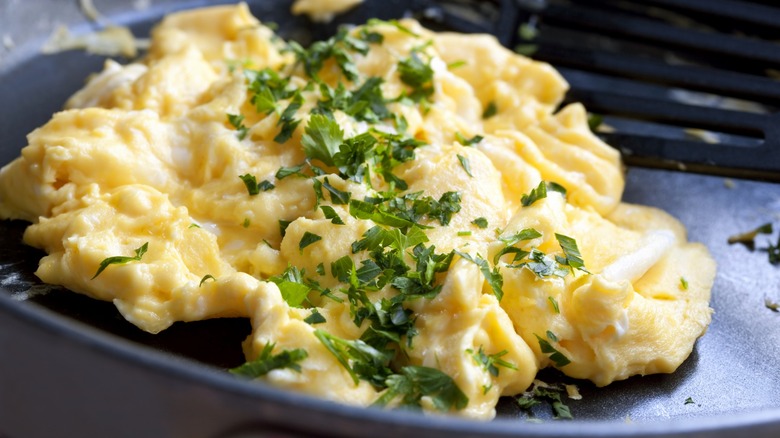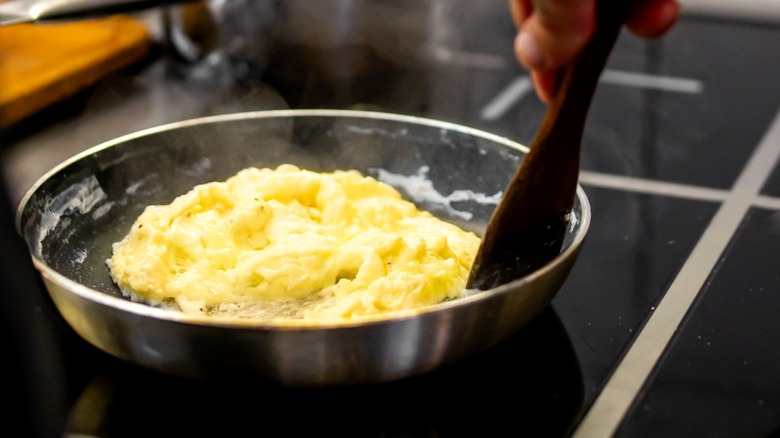Scrambled Eggs Reach Peak Perfection If You Focus On This Part Of The Pan
Scrambled eggs are one of those foods where achieving the correct texture is paramount to creating an exceptional dish. Creamy, fluffy eggs don't happen by accident, and things can take a turn for the worse in an instant if you aren't mindful about where your pan's hot and cold spots are. Chef Nelson Serrano-Bahri, director of innovation at The American Egg Board, insisted that folks hoping for a superb breakfast pay close attention to the edge of the pan.
"The outer film of the eggs sits directly over the pan's hottest zone and receives the most conductive heat," Serrano-Bahri told The Takeout. "Gas flames also lick the rim, raising that edge temperature even more. The center, insulated by liquid egg, heats more slowly, so edges always set first." And therein lies the primary secret behind manipulating them while they cook to achieve the ideal texture.
To combat the hot and cold zones, Serrano-Bahri suggested, "Use low heat with on-off pulses: Lift the pan off the burner the moment the edges start to firm, then return it in short spurts to maintain gentle cooking." That is similar to the technique Gordon Ramsay employs to make perfect scrambled eggs every time. Yet, it isn't the only action necessary for impeccable scrambled eggs. "Sweep continuously," Serrano-Bahri said. "Using a flexible spatula, nudge the cooked edges toward the center so fresh egg flows out to meet the pan."
Additional tips for perfectly scrambled eggs
For the fluffiest scrambled eggs, you need to use the right tools. The right type of whisk and a reliable spatula are two, but Chef Nelson Serrano-Bahri made the case that what the eggs are cooked in is of the utmost importance. "Choose the right pan and preheat lightly," he said. "Nonstick or well-seasoned stainless distributes heat evenly."
Although it can be tempting when preparing them for a crowd, Serrano-Bahri warned against attempting to make a large batch of scrambled eggs at once. "Cook in small batches," he said. "A thinner layer of eggs cooks more uniformly and is far easier to control." He also indicated that you should use more than one ingredient in scrambled eggs: "Add a mid-cook pat of butter: Butter melts cooler than the pan, taming hot spots and enriching texture."
Another way to control the hotter areas of the pan is to cover it for a short time as the eggs near completion. Serrano-Bahri said this works because "[t]rapping steam balances surface and edge heat, finishing curds gently." His last tip addresses one of the mistakes some make when grilling steak, which is not accounting for carryover cook time. "Finish early," Serrano-Bahri said. "Residual heat cooks the final 5 to 10%; plate slightly underdone for perfection at the table."

